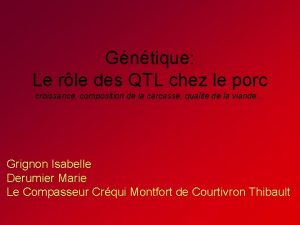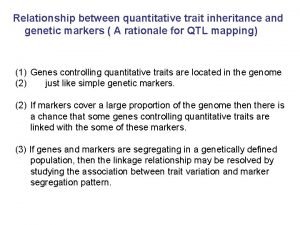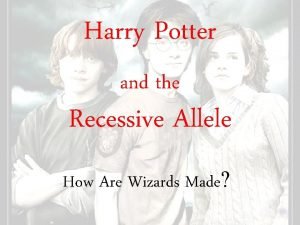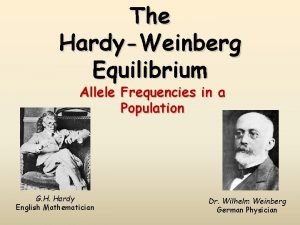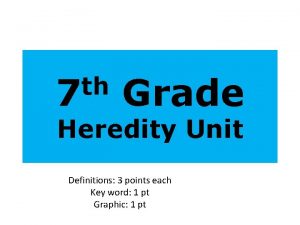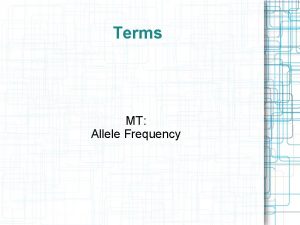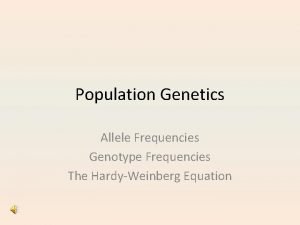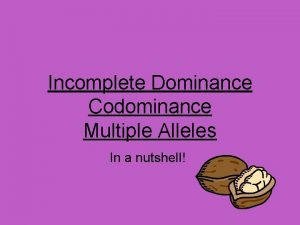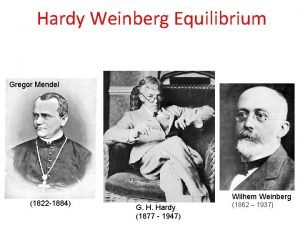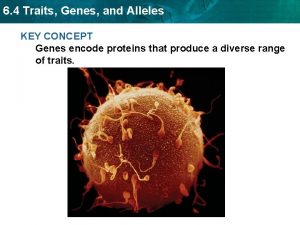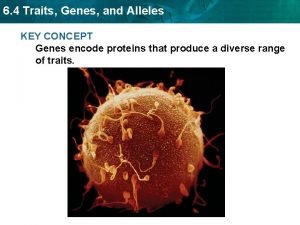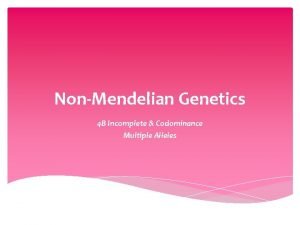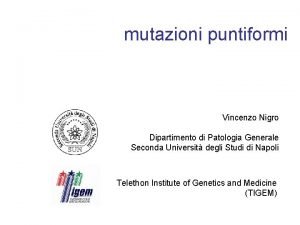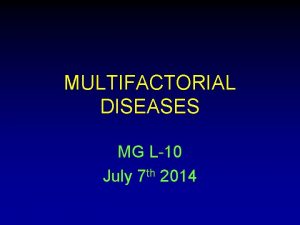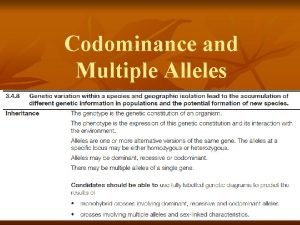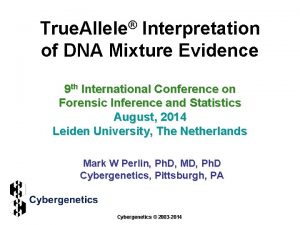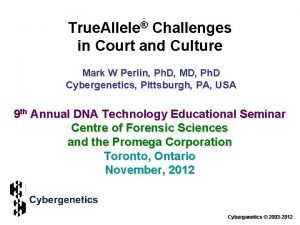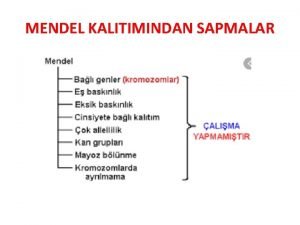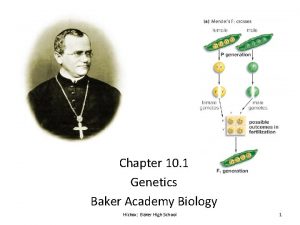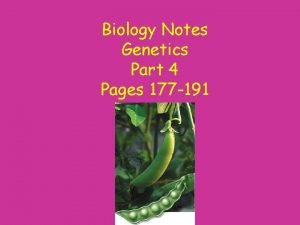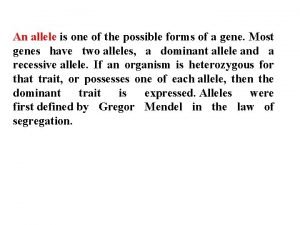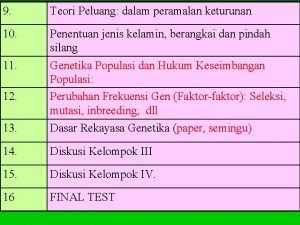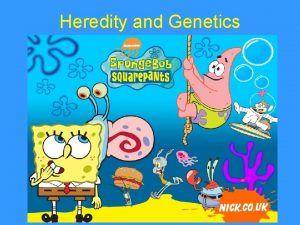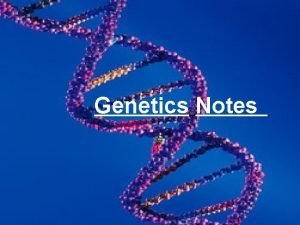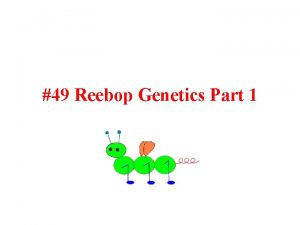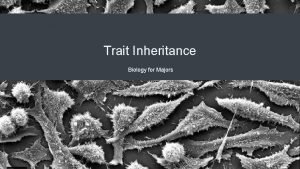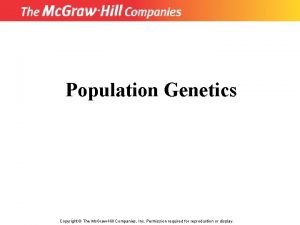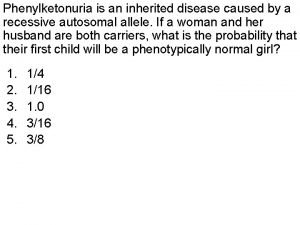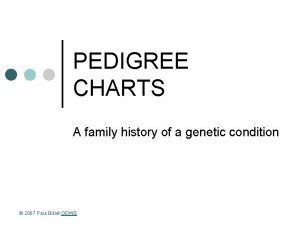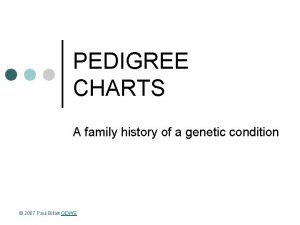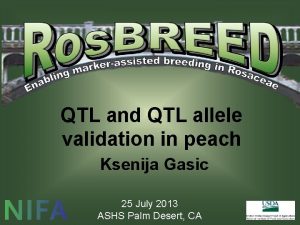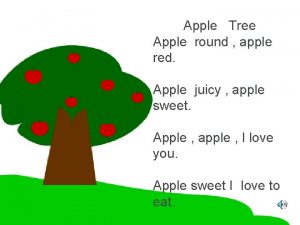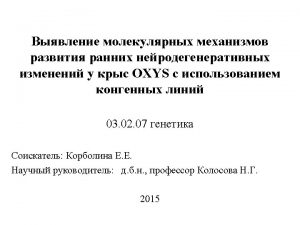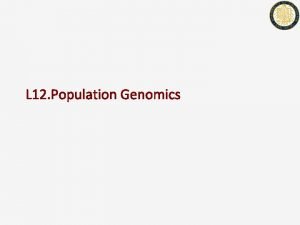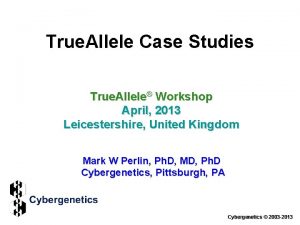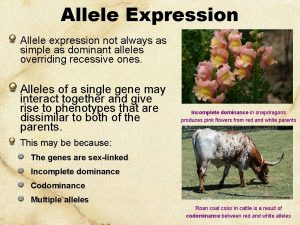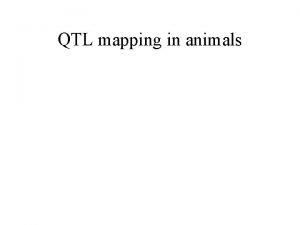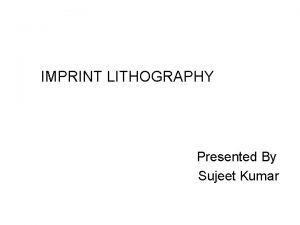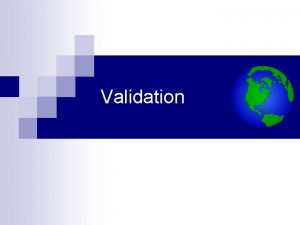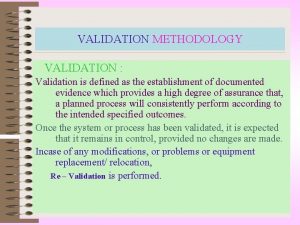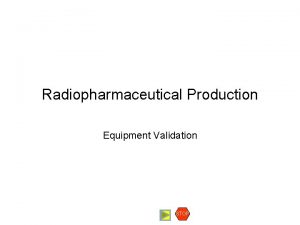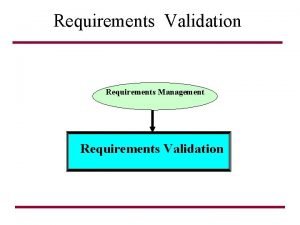QTL and QTL allele validation in apple Sujeet








































- Slides: 40

QTL and QTL allele validation in apple Sujeet Verma, Cameron Peace, Jim Luby, Kate Evans, Susan Brown, Matt Clark, Cari Schmitz, Yingzhu Guan, Ben Orcheski, Umesh Rosyara, Nahla Bassil, Eric van de Weg 25 July 2013 ASHS Palm Desert, CA

Outline of Presentation v What to Target First? v QTL Validation: LG 16 Ma for acidity (and crispness and other traits) v QTL Allele Validation for LG 16 Ma (Ma-indel DNA test) v Other Jewels for Apple

What to Target First? - deciding which of the known QTLs is worth attempting to validate for breeding

Some Apple QTLs Known Previously (focusing on Mendelian Trait Loci and QTLs with candidate genes) Ma locus – “high” vs “medium” acidity, also major QTL for crispness, juiciness, consumer liking, others 2 MBAc “Apple flavor” locus Md-MYB 1 gene for red skin vs. non-red skin Md-MYB 10 gene for red flesh Md-PG 1 gene for firmness Vf locus – scab resistance Md-ACS 1 gene for storability Second major acidity locus Md-ACO 1 gene for storability Firmness QTL – Md-Exp 7 gene etc…

Ros. BREED’s Socio-Economics Surveys What trait is my next breeding target? We like disease resistant apple trees! We like firm tart cherries that pit well! I like tasty strawberries! Processors Breeder survey 2010 Household data Producer survey Market Intermediary analysis 2010; Fall 2011 survey Fall 2010 consumer survey 2012 Winter 2011 Trait Values

What Do People Really Want in Fruit of a New Apple Cultivar? And the survey says. . . full/intense FLAVOR very CRISP long SHELF LIFE FIRM

Some Apple QTLs Known Previously Ma locus – “high” vs “medium” acidity, also major QTL for crispness, juiciness, consumer liking, others Md-PG 1 gene for firmness 2 MBAc “Apple flavor” locus Md-MYB 1 gene for red skin vs non-red skin Md-MYB 10 gene for red flesh Vf locus – scab resistance Md-ACS 1 gene for storability Second major acidity locus Md-ACO 1 gene for storability Firmness QTL – Md-Exp 7 gene

Some Apple QTLs Known Previously Ma locus – “high” vs “medium” acidity, also major QTL for crispness, juiciness, consumer liking, others tart, crisp, & juicy. . . “fresh sensation”

The Ma Locus Ma locus – “high” vs “medium” acidity, also major QTL for crispness, juiciness, consumer liking, others Ma = Malic acid • Monogenic inheritance of apple acidity (Wellington 1924), designated as Ma locus (Visser & Verhaeg 1978) • Detected as a QTL (~40% phen variance) in single F 1 populations (King et al. 2001, Leibhard et al. 2003), also QTL for crispness, juiciness, and others • More recently, detected as a QTL for acidity via association mapping with SNPs (Kumar et al. 2012) • = Malic acid transporter gene (Xu et al. 2012, Khan et al. 2013)

The Ma Locus Ma locus – “high” vs “medium” acidity, also major QTL for crispness, juiciness, consumer liking, others Ma = Malic acid Is this QTL, LG 16 Ma, detectable in U. S. breeding germplasm? Is it associated with other socio-economically valuable traits in addition to acidity? If so, how can breeders exploit it?

QTL Validation - confirming the LG 16 Ma QTL really exists in apple breeding germplasm

QTL Validation Dataset WA • Germplasm from 3 major U. S. breeding programs - total n = 960 - all pedigree-linked - multiple families & ancestors - chosen to represent alleles of 57 important breeding parents • Fruit quality standardized phenotyping for 3 years (at harvest and after 10 & 20 wks storage) • Genome scanning with 8 K SNP array and a nearby SSR MN NY

QTL Validation Analysis • Use Pedigree-Based Analysis software Pedimap Flex. QTL™

QTL Validation Results • Validated position of LG 16 Ma for acidity! malic acid transporter gene Expected LG 16 Ma locus position etc. at harvest after 10 wks storage after 20 wks storage • Evidence for bitter pit QTL there too • Some, but less, evidence for crispness/juiciness

QTL Validation Results 2010 Sensory Acidity (second acidity QTL on LG 8 also consistent) 2012 2011 • LG 16 Ma for acidity consistent over: - storage durations - years - families - breeding programs Results shown for the Flex. QTL™ analysis of WSU Ros. BREED data Titratable Acidity

QTL Validation Results • So, the QTL is there, but. . . o What functional alleles are present in breeding germplasm? o What are the effects and value of those alleles? (alone or in combination with others) o What is their occurence? - frequencies sources (founders, important parents) • And besides with genome-scan SNPs, can all this be captured with a simple DNA test?

QTL Allele Validation - detecting and valuing LG 16 Ma alleles in apple breeding germplasm

Functional Alleles Present • With SNP and SSR haplotyping: o 11 alleles in Washington State Univ. apple breeding program germplasm o 15 more in Univ. Minnesota and Cornell Univ. breeding germplasm • Are these all functionally unique?

Effects of Functional Alleles Titratable Acidity (TA, m. Eq/L) above the season average of 0. 70 (2011 at harvest, WSU seedlings, n=214) High-acid alleles Ma 1 Ma 2 Ma 3 Ma 4 Ma 5 xx 1 ma 2 ma 3 ma 4 ma 5 Low-acid alleles • For acidity, can simplify to two types: “Ma” (high acid) and “ma” (low acid)

Effects of Functional Alleles • But various effects on other traits. . . Crispness rating (1 -5) above season average of 2. 90 (2011 at harvest, WSU seedlings, n=214) Bitter pit incidence rating (1 -5) below season average of 1. 50 Ma 1 Ma 2 Ma 3 Ma 4 Ma 5 xx 1 ma 2 ma 3 ma 4 ma 5 (As in other graphs, high here is good)

Values of Functional Alleles • So, each of the 11 alleles can be +ve or -ve for effect on acidity, crispness, bitter pit incid. - often trade-offs • Which ones are most desirable? • Overall value of each allele can be determined as socio-economic value of its relative effect on each trait

(Example of Socio-Economics Results – Market Intermediary $ Values) Trait Threshold Value* Shelf life 1 week $0. 134 Crispness not very $0. 129 Flavor weak/mild $0. 128 Appearance full/intense 3% defects Firmness 14 lb $0. 009 Size 100 -count $0. 002 $0. 123 * Willingness-to-pay of market intermediaries per lb of a 42 lb box

Values of Functional Alleles • Using $ values from Ros. BREED’s survey results of market intermediaries. . . Bitter pit incidence Crispness Total socioeconomic value of allele Acidity High-acid alleles tend to be most valuable overall Ma 1 Ma 2 Ma 3 Ma 4 Ma 5 xx 1 ma 2 ma 3 ma 4 ma 5 Most valuable allele because of valuable contribution to all 3 traits In contrast, these only valuable for bitter pit (low incidence)

Values of Functional Alleles • Strategy: recombination to get even more valuable alleles (assuming three different genes) Bitter pit incidence Crispness Total socioeconomic value of allele Acidity Ma 1 Ma 2 Ma 3 Ma 4 Ma 5 xx 1 ma 2 ma 3 ma 4 ma 5 Can we combine best of each into a single allele?

Frequencies of Functional Alleles

Frequencies of Functional Alleles ma 5 Shown for parent pool (58 cultivars and selections) of WSU apple breeding program ma other ma 4 ma 3 Ma 1 ma 2 Ma 3 ma 1 xx 1 Ma other Ma 4 Ma 5

Sources of Functional Alleles Parents (founder sources) (Mc. Intosh) Shown for parent pool (58 cultivars and selections) of WSU apple breeding program (Frostbite) ma Honeycrisp other Arlet, Aurora, Arlet, Cameo, Enterprise ma 5 Enterprise, Fuji, Gala, Splendour, WA 2 Ma 1 (Red Delicious, ma 4 (Lady ma 3 Williams, Braeburn Granny Smith) Golden Delicious) Aurora, Gala, ma 2 Sansa, WA 2 Ma 2 (Red Delicious) Arlet, Cameo, Cripps Pink, ma 1 Splendour (Golden Delicious) (Granny Smith) Cripps Pink Ma 3 (Lady Williams) xx 1 Honeycrisp Ma other (Duchess of Oldenburg) WA 5 Ma 4(Rome Beauty) Ma 5 WA 7 (NJ 90)

Simple Locus-Specific DNA Test • All previous effects, values, frequencies were defined by 8 K-array SNP haplotypes • Converted to a simple PCR marker – “Ma-indel” – captured most information • Can now use in high-throughput MAB • Already used to screen many parents and >10, 000 seedlings (WSU & UMN) in spring 2013

Ma-indel DNA Test: a “Jewel in the Apple Genome” “Fresh sensation” (crispness, tartness, & juiciness)

Other Jewels for Apple

Other Apple Jewels Available Now Acidity Bitter pit incidence Fruit storability

Acidity The LG 8 A Locus – as big as LG 16 Ma for acidity LG 16 Ma: additivity 9 3 Low 5 8 High Med. High 2 Med. dominance 7 Med. High 4 l 2011 at-harvest TA All WSU populations High LG 8 A: partial Relat acidit ive y leve 6 Very High Med. Cat TA ±sd 9 = 0. 94 ± 0. 15 1 7 = 0. 67 ± 0. 06 Very low med high Low low med high 5 = 0. 67 ± 0. 14 Ma locus 3 = 0. 53 ± 0. 11 A locus 1 = 0. 43 ± 0. 09 Together: some epistasis Best to consider together

The Bp 13 Locus – combines well with Bp 16 (Ma) Bitter pit incidence Homozygous “high” for both loci Homozygous “high” for Bp 16 (Ma) Homozygous “high” for Bp 13 Not homozygous for either locus

probabilit y The Rf locus – skin color amount, type, hue Cover amount over apple skin surface Allele & Genotype frequencies in 192 U. S. cvs rf Rf rfrf Rf. Rf Rfrf

Md-ACS 1 & Md-ACO 1 - the ethylene synthesis genes Fruit storability from harvest to 20 weeks storage plus 1 week at room temperature (Newtons, M 2 of Mohr Digi-Test) Change in firmness F=favorable N=non-favorable 0 2 4 6 8 10 12 14 ACS 1 4 some softening 6 more softening 8 10 FF FN NN 0 2 4 6 8 10 12 14 Both genes - additive ACO 1 12 14 ACS: FF FF FN FN ACO: NN FF NN FN FF ACS 1 FF FN NN ACO 1 allele frequencies in U. S. cultivars No N/N U. S. cultivars found

Md-ACS 1 & Md-ACO 1 www. rosbreed. org/breeding/jewel-use/apple Fruit storability

Md-ACS 1 & Md-ACO 1 Fruit storability

Apple Jewels = QTLs & Their Alleles Validated, with DNA Tests Developed. . . and Used in MAB “Fresh sensation” (crispness, tartness, & juiciness) Acidity Bitter pit incidence Fruit storability

Acknowledgements This project is supported by the Specialty Crop Research Initiative of USDA’s National Institute of Food and Agriculture

MSU Amy Iezzoni (PD) Jim Hancock Dechun Wang Cholani Weebadde Univ. of Arkansas John Clark WSU Cameron Peace Dorrie Main Kate Evans Univ. of Minnesota Karina Gallardo Jim Luby Vicki Mc. Cracken Chengyan Yue Nnadozie Oraguzie Former WSU Oregon State Univ. Raymond Jussaume Alexandra Stone Mykel Taylor Cornell Susan Brown Kenong Xu Clemson Ksenija Gasic Gregory Reighard Texas A&M Dave Byrne USDA-ARS Nahla Bassil Gennaro Fazio Univ. of CA-Davis Chad Finn Tom Gradziel Carlos Crisosto Plant Research Intl, Netherlands Univ. of New Hamp. Eric van de Weg Tom Davis Marco Bink
 Qtl club c'est quoi
Qtl club c'est quoi Rf4 inheritance
Rf4 inheritance Qtl mapping
Qtl mapping Qtl moodle
Qtl moodle How to make apple jelly from apple juice
How to make apple jelly from apple juice Harry potter and the recessive allele
Harry potter and the recessive allele Hardy weinberg allele frequency
Hardy weinberg allele frequency Recessive allele meaning
Recessive allele meaning Allele frequency def
Allele frequency def What is gene frequency in genetics
What is gene frequency in genetics Allele example
Allele example Blood type
Blood type How to calculate allele frequency
How to calculate allele frequency Sickle cell disease incomplete dominance
Sickle cell disease incomplete dominance Example of codominance
Example of codominance Hardy weinberg allele frequency
Hardy weinberg allele frequency Allele example
Allele example Allele vs gene
Allele vs gene Allele vs trait
Allele vs trait What does incomplete dominance mean
What does incomplete dominance mean Allele antimorfo
Allele antimorfo How to calculate allele frequency from genotype
How to calculate allele frequency from genotype Allele picture example
Allele picture example Allele
Allele Codominant
Codominant True allele
True allele Cybgen
Cybgen Bir karakterin birden fazla allele bulunabilir
Bir karakterin birden fazla allele bulunabilir Eye color punnett square
Eye color punnett square Dominant allele definition
Dominant allele definition Alleles
Alleles Dna komplemen
Dna komplemen Allele
Allele Allele
Allele Allele neomorfo
Allele neomorfo Allele
Allele Multiple alleles in animals
Multiple alleles in animals Allele frequency
Allele frequency Pku is an inherited disease caused by a recessive allele
Pku is an inherited disease caused by a recessive allele Pedigree key
Pedigree key Allele key
Allele key
